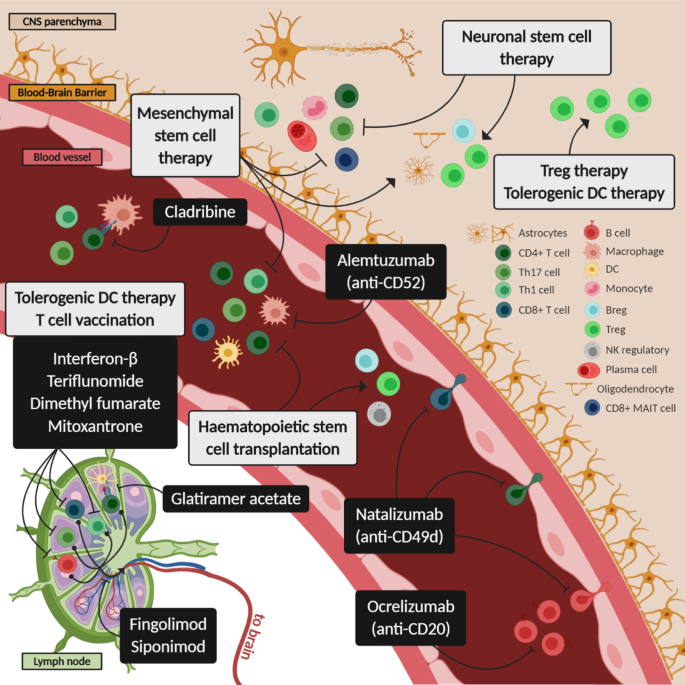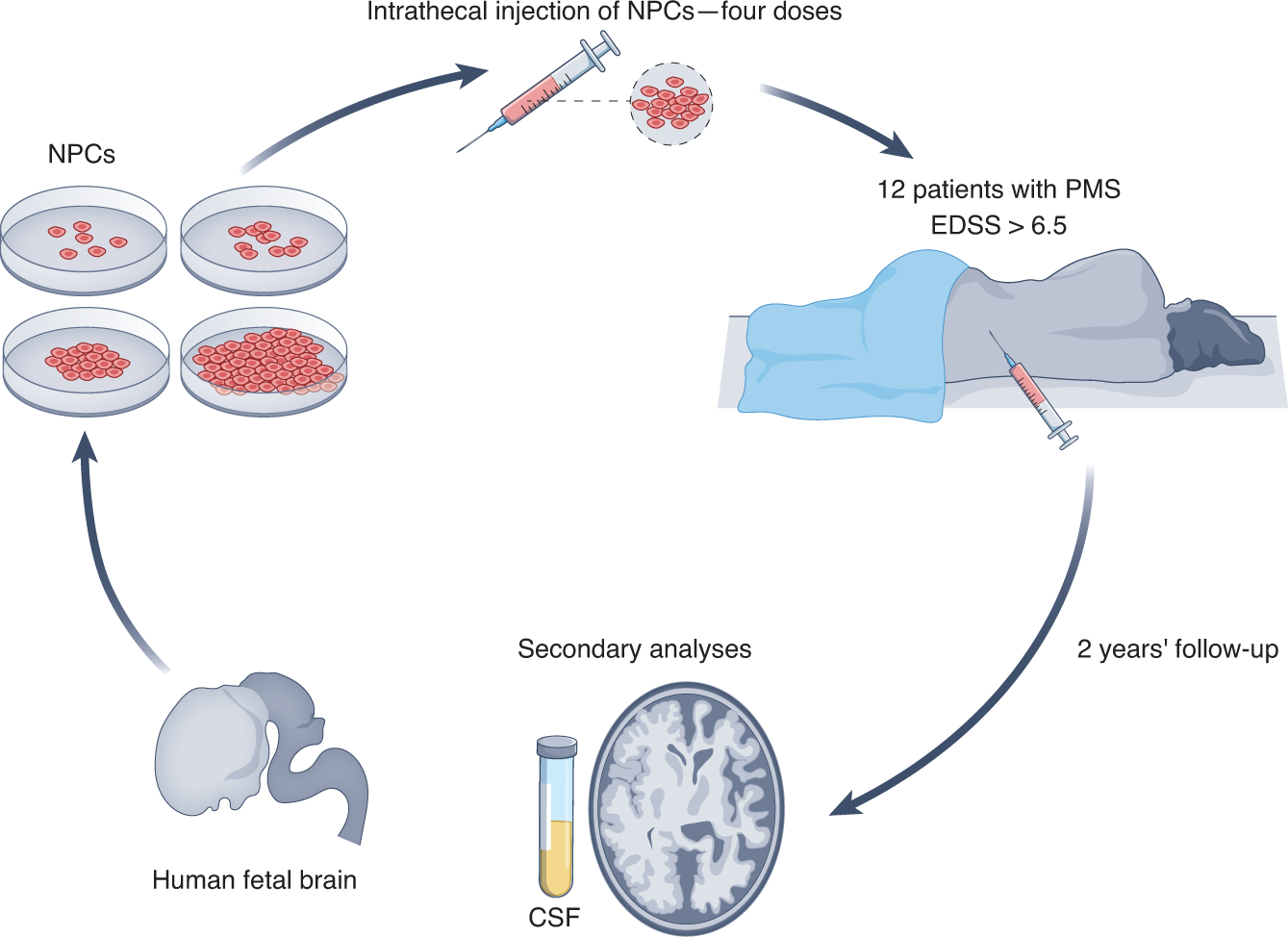Regenerative Medicine For Multiple Sclerosis Fundamentals Explained
Wiki Article
What Does Regenerative Medicine For Multiple Sclerosis Mean?
Table of Contents8 Easy Facts About Regenerative Medicine For Multiple Sclerosis ShownIndicators on Regenerative Medicine For Multiple Sclerosis You Should KnowOur Regenerative Medicine For Multiple Sclerosis IdeasThe Best Strategy To Use For Regenerative Medicine For Multiple SclerosisThe Single Strategy To Use For Regenerative Medicine For Multiple SclerosisLittle Known Facts About Regenerative Medicine For Multiple Sclerosis.The Ultimate Guide To Regenerative Medicine For Multiple Sclerosis
The mesenchymal stem cells transplanted during stem cell therapy can divide and grow to create new cells that can take the location of the damaged cells of the nervous tissue. This could restore neurological features in patients with this condition. These benefits of stem cell treatment are additional supported by the ability of MSCs to advertise healing.People with several sclerosis are usually treated with mesenchymal stem cells. These are multipotent stem cells that have the ability to distinguish and grow to develop a large range of cell enters the body. Once transplanted, these stem cells can create to form healthy afferent neuron hence sustaining the regrowth of the damaged cells of the nerves.
When transplanted, the stem cells move to areas of swelling or damage within the central nerve system (CNS). They are naturally drawn in to the sites of injury where the body immune system is striking the myelin sheath, the safety treatment of nerve fibers. The stem cells work by promoting the repair and regrowth of harmed myelin, potentially restoring feature to influenced afferent neuron.
Not known Details About Regenerative Medicine For Multiple Sclerosis
Stem Cell Research Study on MS The National Several Sclerosis Culture, along with various other organizations, is actively moneying and supporting research into mesenchymal stem cell therapy for several sclerosis to explore their possible and improve therapy procedures. The objective is to create safer and extra effective means to utilize stem cells in treating MS.
Some Of Regenerative Medicine For Multiple Sclerosis
Here are reviews from testimonials of people Swiss Medica clinic. The person traveled from Romania seeking treatment for MS after hearing positive feedback about stem cell treatment for the illness.Obtain a complimentary online assessment to discover just how stem cells will certainly help your situation, and what are the period and expense of the treatment. Clinical Advisor, Swiss Medica medical professional Lemus, H. N., Warrington, A. E., & Rodriguez, M. (2018 ). Several Sclerosis: Mechanisms of Illness and Strategies for Myelin and Axonal Fixing.
Some Ideas on Regenerative Medicine For Multiple Sclerosis You Need To Know

Stem cells are cells in the body that can mature into specialized cells that offer a details feature. They are additionally able to generate specific duplicates of themselves. There are 2 primary sorts of stem cells: beginning stem cells and adult stem cells. are discovered in the creating embryo and can grow into most kinds of cells in the body.
are discovered in some adult tissues and organs including the bone marrow, skin, blood, and brain. Grown-up stem cells are not as adaptable as beginning stem cells and are for that reason much more limited in regards to the types of cells they develop right into. The special buildings of stem cells give guarantee for brand-new treatments that can slow/halt original site MS illness task and repair service tissue damage in the central nerves.
The Single Strategy To Use For Regenerative Medicine For Multiple Sclerosis

The procedure entails collecting stem cells from an individual's own (autologous) bone marrow. The person is then treated with radiation treatment to diminish the body immune system and stem cells are reintroduced into the body where they mature into brand-new, healthy immune cells - Regenerative Medicine for Multiple Sclerosis. Stem cells can be injected right into the body in different methods

In 2000, the MS Culture of Canada and MS Scientific Research Structure moneyed a medical trial including HSC transplants, led by Drs. Mark Freedman and Harry Atkins from the Ottawa Hospital Research Institute/University of Ottawa. The aHSC treatment available in Canada is a therapy that utilizes high-dose chemotherapy, also called conditioning.

The Basic Principles Of Regenerative Medicine For Multiple Sclerosis
Neural stem cells (NSC) are found in the mind and can grow into various kinds of brain cells including nerve cells, oligodendrocytes, and astrocytes. NSCs may serve to repair or shield the brain and modulate the body immune system. Early medical trials in non-human primates demonstrated that treatment with NSCs benefitted the progression of MS-like disease in animal versions.The arise from these safety and security research studies are positive for future stem cell and regenerative medication treatments in MS. Future scientific tests (phase 2 and 3) with larger numbers of participants and controls are needed to evaluate the efficacy of this therapy for MS. As demonstrated by the instances above, there is a large range of research occurring that will provide added solutions regarding the use of stem cells to deal with MS.
Stem cell therapy is taken into consideration safe, but, like any kind of clinical treatment, it carries some threats, such as short-term swelling or pain at the shot website. Serious side effects are uncommon when performed by qualified professionals.
Excitement About Regenerative Medicine For Multiple Sclerosis
Numerous sclerosis (MS) is a chronic disease of the central nervous system that affects the brain and spinal cord. It is defined by the deterioration of myelin, a compound that covers nerve fibers, bring about interruptions in interaction in between the mind et cetera of the body. Signs and symptoms can differ extensively and consist of muscle mass weakness, vision problems, inequality, and tiredness.Several sclerosis is characterized by the immune system incorrectly striking web the protective sheath (myelin) that covers nerve fibers, causing communication problems in between the mind et cetera of the body. The condition can cause the damage or long-term damage of nerves. Symptoms vary commonly amongst patients and can consist of exhaustion, wheelchair problems, pain, and cognitive changes.
Report this wiki page